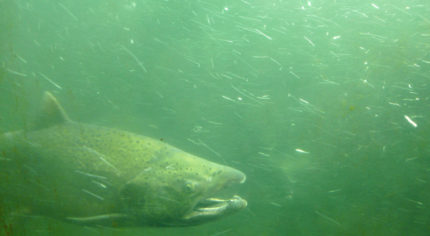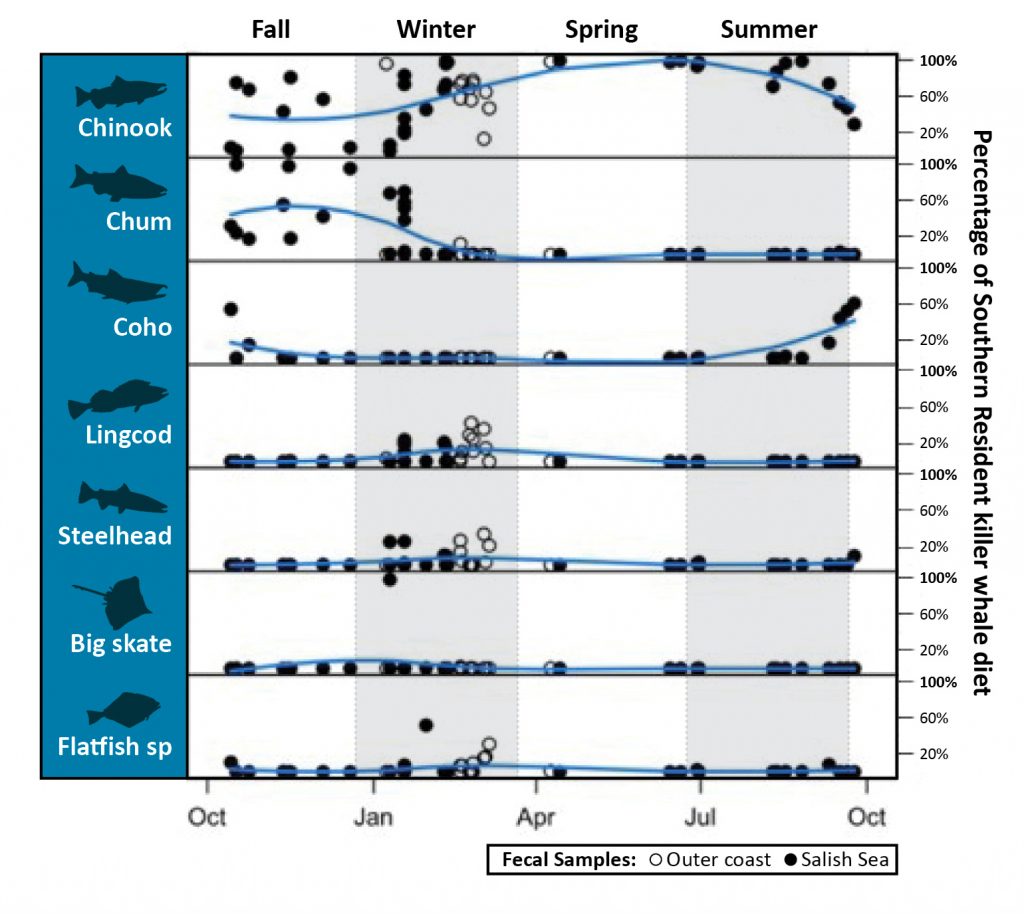‘We Need To Diversify And Increase Availability’ Of Chinook For SRKWs: Author Of New Paper On Orca Diets
“Increasing the abundance of Chinook salmon stocks that inhabit the whales’ winter range may be an effective conservation strategy for this population.”
So argues a new paper on Washington’s southern resident killer whales from authors at the National Marine Fisheries Service’s Northwest Fisheries Science Center and elsewhere.

The peer-reviewed “Endangered predators and endangered prey: Seasonal diet of Southern Resident killer whales” published in PLOS One also reaffirmed yet again that king salmon are the key feedstock for J, K and L pods, comprising roughly 50 percent to nearly 100 percent of their breakfast, lunch and dinner as they prowl Washington Coast, Strait of Juan de Fuca, San Juan Islands and Puget Sound waters at different times of year.
But boosting production of Chinook stocks that are available to orcas specifically in winter could help out the 75 southern residents that are left.

“We don’t need more cookie-cutter fish that all come back during the time when Chinook are most abundant; we need to diversify and increase availability at other times of the year,” said coathor Robin Baird of Cascadia Research Collective in a NMFS story on the paper.
To that end, funding from the Pacific Salmon Commission and state legislature provided for the release of 11.6-plus million extra hatchery Chinook in 2020 over previous years.
And 18.3 million additional kings are expected to be let loose this year, according to NMFS.
State and tribal salmon fisheries in Washington waters have been reduced up to 90 percent over the past 40 years in response to dwindling runs.

Among yesterday’s bevy of WDFW emergency rule change notices for spring Chinook on Southwest Washington tribs, the reduced bag limit and early closure at Drano Lake is part of an effort to increase broodstock collection at the Little White Salmon National Fish that will not only benefit sport and tribal anglers, but “support recovery of the endangered Southern Resident killer whale population, though the results of these efforts may not be realized for several year,” according to the agency.
“In line with the findings, the hatchery production will help maintain the portfolio of stocks, including those that overlap with the killer whales during the lean times of winter. Biologists also manage the production to avoid risk to naturally produced salmon,” NMFS writes.

While Chinook are important year-round, SRKWs also consume chum, lingcod, steelhead and lingcod at different points of the year, fecal sample studies showed.

Two-thirds of Puget Sound whale doots contained genetic material from local Chinook stocks (mostly South Sound, but some North Sound), but also nearly 15 percent from the Fraser, 5 percent from both Washington’s outer coast and the Sacramento and other Central California systems, 4 percent from the Skeena, and 2 percent from both the Rogue and mid-Columbia tules.
Risks of increased salmon production include potential genetic impacts to native or natural-origin Chinook and interception of smolts by other marine mammals, a well-known problem.
“Consequently, consideration should also be given to actively managing other prey species identified in this study to benefit SRKWs. As such, an ecosystem context is important to consider when directing recovery efforts to address limitations in the SRKWs’ prey,” write the authors of the paper.
They say that continued monitoring of SRKWs is needed “to better understand the resiliency of this population as the whales have limited options to respond to declines in their preferred prey. In addition, as salmon management and recovery actions are implemented to increase the number of salmon available for this killer whale population, continued diet monitoring will be important in assessing the adequacy of these actions and informing an adaptive approach to recovery of SRKWs.”
